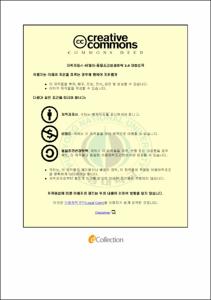마찰교반용접된 Al7075-T651 합금의 피로균열전파율의 변동성에 관한 연구
- Alternative Title
- A Study on Variability of Fatigue Crack Growth Rate in Friction Stir Welded Al7075-T651 Alloy
- Abstract
- For the purpose of design and structure safety/integrity assessment, it is often necessary to establish the significance of the defects in structure components that are subject to fatigue loading. Therefore it is important to investigate the statistical variability of fatigue crack growth in order to develop the methodology for probabilistic fatigue crack growth life prediction.
Recently, demands for the environment protection and energy conservation have been growing. Given such demands, Aluminium 7075-T651 is widely used in transfer machine industry, such as aerospace, automotive and railroad industry, for its superior strength and ultralightness. And this type of ultralight material is generally used in fields under the cyclic loading.
Friction Stir Welding (FSW) is a solid state joining method. The welding process was invented by W. Thomas and a team of his colleagues at The Welding Institute (TWI) in 1991 and patented in 1995. In this process, a specially designed, non-consumable, rotating tool is slowly plunged into material to be joined and traversed along the length of the material. FSW is considered as one of the most important welding developments in the past two decades because of its advantages of avoiding some of the defects seen in conventional fusion welds and better mechanical properties including low residual stresses.
Most experimental studies on FSWed aluminum alloys focused on constant amplitude cycle loading. The works were done to understand the effects of microstructure, residual stress and/or hardness around the welded zone of fatigue crack growth behavior. However, they did not concern its inhomogeneous material properties and/or the variability of fatigue crack growth life. While such tests are useful for obtaining the direct relation between fatigue crack growth rate and stress intensity factor range, it is difficult to understand the effects of microstructure, residual stress and variability of fatigue crack growth resistance.
Constant stress intensity factor range control keeps the stress intensity factor range constant throughout the length of the test. This approach is very useful for investigating the effects of material property on the variability of fatigue crack growth rate.
Generally, the fatigue crack growth behavior of FSWed aluminum alloys is controlled by intrinsic factor, such as material property, and extrinsic factor, such as environment and loading condition. For the joints, it is necessary to clarify and investigate the probability distribution function crack growth life in view of the damage tolerance analysis.
In light of the above, the objective of this study is to investigate the fatigue crack growth behavior for three different zones, Weld Metal, Heat Affected Zone and Base Metal of FSWed 7075-T651 aluminum alloy. And the variability of specimen to specimen and spatial specimen for fatigue crack growth rate (FCGR) is examined by Weibull analysis using the experimental data.
The mean fatigue crack growth rate of BM was found to be the highest at all ΔK ranges, whereas HAZ and WM exhibited the lowest rate. Furthermore, variability of specimen to specimen for fatigue crack growth rate was found to be the highest in WM, where BM exhibited the lowest variability, and in case of spatial specimen for fatigue crack growth rate results showed that variability of WM is higher than that of BM.
- Issued Date
- 2013
- Awarded Date
- 2013. 8
- Type
- Dissertation
- Publisher
- 부경대학교
- Alternative Author(s)
- Yeui Han Jeong
- Affiliation
- 대학원
- Department
- 대학원 기계설계공학과
- Advisor
- 김선진
- Table Of Contents
- Abstract iii
Nomenclature v
제 1 장 서 론 1
1.1 연구의 배경 및 필요성 1
1.2 연구의 목적 4
제 2 장 이론적 배경 6
2.1 마찰교반용접(FSW) 용접 6
2.1.1 마찰교반용접(FSW) 6
2.1.2 마찰교반용접조건 설정 11
2.1.3 FSW된 Al7075-T651 판재의 미세조직 12
2.2 파괴역학에 기초한 피로균열전파 14
2.3 확률변수와 확률분포 19
2.3.1 정규분포 21
2.3.2 대수정규분포 24
2.3.3 와이블분포 26
제 3 장 실험 방법 및 절차 31
3.1 재료 및 시험편 31
3.1.1 실험 재료 (Al7075-T651) 31
3.1.2 마찰교반용접 실험 34
3.1.3 시험편 채취 및 제작 36
3.2 실험 절차 및 방법 37
3.2.1 실험시스템 38
3.2.2 실험조건 및 방법 40
제 4 장 결과 및 고찰 42
4.1 피로균열전파 거동의 불규칙성 42
4.2 피로균열전파율과 응력확대계수범위와의 관계 45
4.3 재질별 시험편간 피로균열전파율의 변동성 47
4.4 재질별 시험편내의 공간적 변동성 60
4.5 피로균열전파 거동의 파면 해석 70
제 5 장 결 론 73
참고문헌 76
감사의 글 81
- Degree
- Master
- Files in This Item:
-
-
Download
 마찰교반용접된 Al7075-T651 합금의 피로균열전파율의 변동성에 관한 연구.pdf
기타 데이터 / 5.83 MB / Adobe PDF
마찰교반용접된 Al7075-T651 합금의 피로균열전파율의 변동성에 관한 연구.pdf
기타 데이터 / 5.83 MB / Adobe PDF
-
Items in Repository are protected by copyright, with all rights reserved, unless otherwise indicated.